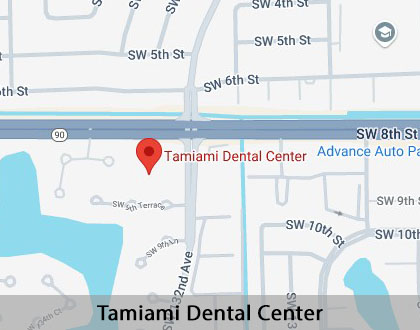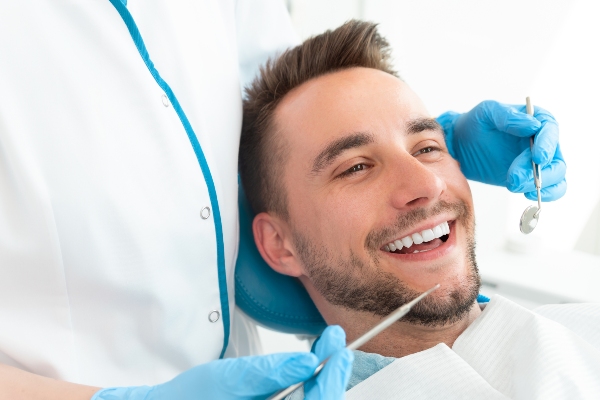Which is Better Invisalign or Braces Miami, FL
When it comes to orthodontic treatments, many parents find themselves unsure of which option is the best choice for their child's health. Straight teeth do more than reveal a beautiful smile — they enhance the patient's overall oral health. Straight teeth remain easier to clean (thus avoiding unwanted cavities). Orthodontic treatment options also correct bites, helping align the teeth and jaw. Two of the most popular options for straightening teeth include traditional metal braces and Invisalign.
While both traditional metal braces and Invisalign lead toward the same result, there are differences that can make treatment for a child's teeth more challenging. The difference remains within the process of how each type of treatment straightens the teeth. Thus, the question is more about which treatment is best for my child's teeth? While the answer varies per patient, it is a good idea to weigh the advantages and disadvantages of both before coming in for an evaluation.
Tamiami Dental Center in Miami is here to help make the right decision for your child's dental needs. Call us at (305) 787-2887 to schedule a consultation.
The Difference Between Metal Braces and Invisalign
While metal braces and Invisalign provide the same end result, it is important to understand the differences and similarities between the two.
Metal Braces
While people may connect metal braces to children or teens, they are still an effective form of dental correction for patients of all ages. For many years, metal braces remained the only option to correct crooked and crowded teeth. Braces involve metal brackets glued to the enamel of each tooth. Metal wires are laced between the brackets to help shape and mold teeth over time. The wires placed on the bracket can sometimes be the same color as tooth enamel so they are less noticeable; however, most of them are metal/silver. Patients also have the option to choose multiple colors to add their own unique style to their braces.
Metal braces are irremovable and stay in place for the duration of treatment. They may be a good option for patients who are concerned about losing their aligner trays or do not want to have to change out trays. Treatment time varies by case, but the average for teens tends to be approximately two years. Most patients require a monthly or bi-monthly check-up, so the practitioner can see how teeth shift, adjust wires accordingly, and ensure there are no issues that need to be corrected.
Invisalign
Invisalign offers a clear set of plastic aligners called "trays" customized to fit each patient's mouth. Invisalign uses 3-D imagery of the patient's teeth to configure and customize the trays to ensure the right fit. The smooth plastic used to create the trays remains BPA-free, providing comfortable wearing. They must be checked and replaced throughout the treatment for both teens and adults to align teeth into the proper position.
Invisalign aligners are removed while eating, drinking, and engaging in activities without interference or concerns about oral injury. Invisalign should be worn approximately 21-22 hours a day for 6-18 months, depending on the issue that needs correcting. Follow-up visits take place approximately every 6 to 8 weeks to change trays. Trays will need to be fitted and customized throughout the treatment as they keep the teeth moving at a gradual pace.
“While metal braces and Invisalign provide the same end result, it is important to understand the differences and similarities between the two.”
Effectiveness
The choice between braces and Invisalign depends largely on preference and the issue that needs correcting. The success rate of Invisalign depends on patient adherence — they must wear the trays to enjoy the benefits of a straighter smile. The trays should be worn for at least 22 hours a day for the treatment to be successful or go as desired.
Braces have also produced positive results in many individuals because of their durability and strength. Individuals with complex dental issues may require metal braces in order to align their teeth. For those with complex dental issues or worry about self-discipline in ensuring continued wear of the trays, metal braces may be a better option. With braces, patients can straighten their teeth without the worry of keeping track of the trays or cleaning them frequently.
“The choice between braces and Invisalign depends largely on preference and the issue that needs correcting.”
Invisalign for Specific Conditions
Invisalign can be helpful for those with mild to moderate dental issues. Treatable cases through Invisalign treatment include overbites, underbites, cross bites, gapped teeth, open bites, crowded teeth, and mixture of baby and permanent teeth. However, each case differs under each of these treatments, and some cases may be too complex to treat with Invisalign.
Complex dental issues requiring traditional metal braces include, but are not limited to, early, late, or irregular loss of baby teeth; delayed eruption of adult teeth; teeth that do not meet at all; missing or extra teeth; incorrect jaw positioning; jaw-clicking; jaw-joint disorder; and respiratory or eating issues. During the consultation appointment, an orthodontist is able to fully understand the patient's case, in combination with other factors, and make a professional suggestion for the appropriate treatment type. In some cases, the patient may qualify for either treatment and be able to choose themselves.
“Invisalign can be helpful for those with mild to moderate dental issues.”
Check out what others are saying about our dental services on Yelp: Which is Better Invisalign or Braces in Miami, FL
Preventing Teeth From Shifting
After removing traditional braces, most patients must wear a retainer at night to keep their teeth from shifting. If the retainer is not worn, teeth will likely move and require further treatment to straighten them again. Once braces are removed, the patient's teeth must be kept aligned. Most patients require a positioner or retainer, typically worn overnight, to keep their teeth aligned after removing braces. With Invisalign, patients do not have to wear a retainer after treatment as teeth generally stay straight after the course of treatment.
However, Invisalign does require patient adherence as they are responsible for keeping them safe, clean, and in proper condition. Patients who do not adhere to the guidelines given to them may also experience shifting and undesired results by the end of treatment. If the patient misplaces or damages their Invisalign trays, they can be replaced but may delay treatment. Invisalign Teen comes with replacement aligners at no additional cost, as it remains common for teenagers to accidentally throw them away or misplace them once they remove them for eating or engaging in activities.
“With Invisalign, patients do not have to wear a retainer after treatment as teeth generally stay straight after the course of treatment.”
Questions Answered on This Page
Q. What are the differences between traditional braces and Invisalign?
Q. Are braces or Invisalign aligners more effective?
Q. What conditions can Invisalign treat?
Q. Which is more likely to revert after finishing treatment?
Q. Are there any necessary dietary restrictions while wearing Invisalign?
People Also Ask
Q. Should I choose Invisalign Teen for my child?
Q. How long is treatment time with traditional braces and Invisalign?
Q. What are the aesthetic differences between Invisalign and traditional braces?
Q. What are the requirements for candidacy?
Q. How can someone find the right Invisalign Dentist?
Q. Why is it important for parents to understand their child's orthodontic needs?
Dietary Restrictions
Invisalign aligners straighten teeth without the dietary restrictions associated with braces. Since these aligners are removable, patients do not have to make any major dietary restrictions. While patients with braces must avoid eating crunchy, chewy, sticky, or hard foods, Invisalign wearers are free to have the foods and beverages they want as long as they remove their aligners beforehand.
However, eating or drinking with Invisalign aligners can cause damage and lengthen the orthodontic treatment time. Dark beverages such as coffee, tea, and wine can also stain aligners, negating their virtually invisible appearance. Eating with aligners or drinking hot beverages can also cause the plastic trays to warp and become misshapen.
“Since these aligners are removable, patients do not have to make any major dietary restrictions.”
Frequently Asked Questions About Braces Versus Invisalign Teen
Q. How long will I have to wear Invisalign?
A. The length of treatment will vary for each patient and their individual needs. However, the average length of Invisalign treatment is 12 to 18 months. While simple cases will take less time, more complex orthodontic issues will require more extensive treatment.
Q. How much does Invisalign cost?
A. The cost of Invisalign will vary depending on factors, including the patient's treatment needs and insurance plan. Every insurance plan is different. People interested in Invisalign should contact their insurance provider for coverage information before seeking treatment.
Q. Will Invisalign interfere with my lifestyle?
A. Unlike other orthodontic options, Invisalign fits easily into people's lifestyles. The clear, plastic aligners are nearly invisible, so patients do not feel self-conscious during treatment. Patients can also remove their aligners when eating, brushing, flossing, or on special occasions as long as they wear them for 20 to 22 hours a day.
Q. Does Invisalign hurt?
A. Invisalign does not usually hurt. However, it can cause some minor pain or discomfort as the trays apply pressure to teeth to move them into alignment. These feelings are normal and will typically disappear within a few days after switching out a set of clear aligners.
Q. How can I clean my Invisalign aligners?
A. Patients can use the Invisalign Cleaning System or a soft-bristled toothbrush to clean their aligners. We also recommend soaking aligners to remove any bacteria present. Patients should also brush after every meal or snack to prevent food residue from getting trapped in their aligners and staining them.
Invisalign® Terminology
Learn More About Braces Versus Invisalign Teen
If you would like to discuss whether to use traditional braces or Invisalign Teen for your child, call Tamiami Dental Center in Miami at 305-787-2887 for more information.
Helpful Related Links
- American Dental Association (ADA). Glossary of Dental Clinical Terms. 2025
- American Academy of Cosmetic Dentistry® (AACD). Home Page. 2025
- Invisalign®. How Invisalign Works. 2025
- Invisalign®. Take the Smile Assessment. 2025
- WebMD. WebMD’s Oral Care Guide. 2025
About our business, license, and website security
- Tamiami Dental Center was established in 2009.
- We accept the following payment methods: American Express, Cash, Check, Discover, MasterCard, and Visa
- We serve patients from the following counties: Miami-Dade County
- We serve patients from the following cities: Miami, Doral, Hialeah, Fontainebleau, Hialeah Gardens, Sweetwater, Coral Gables, Kendall, South Miami, Miami Lakes, Miami Gardens, Medley, Westchester, Coconut Grove, Pinecrest, Sunset, Olympia Heights and Brickell
- FL (License #DN16637). View License Information and Specifics
- National Provider Identifier Database (1659464253). View NPI Registry Information
- Norton Safe Web. View Details
- Trend Micro Site Safety Center. View Details
Back to top of Which is Better Invisalign or Braces











